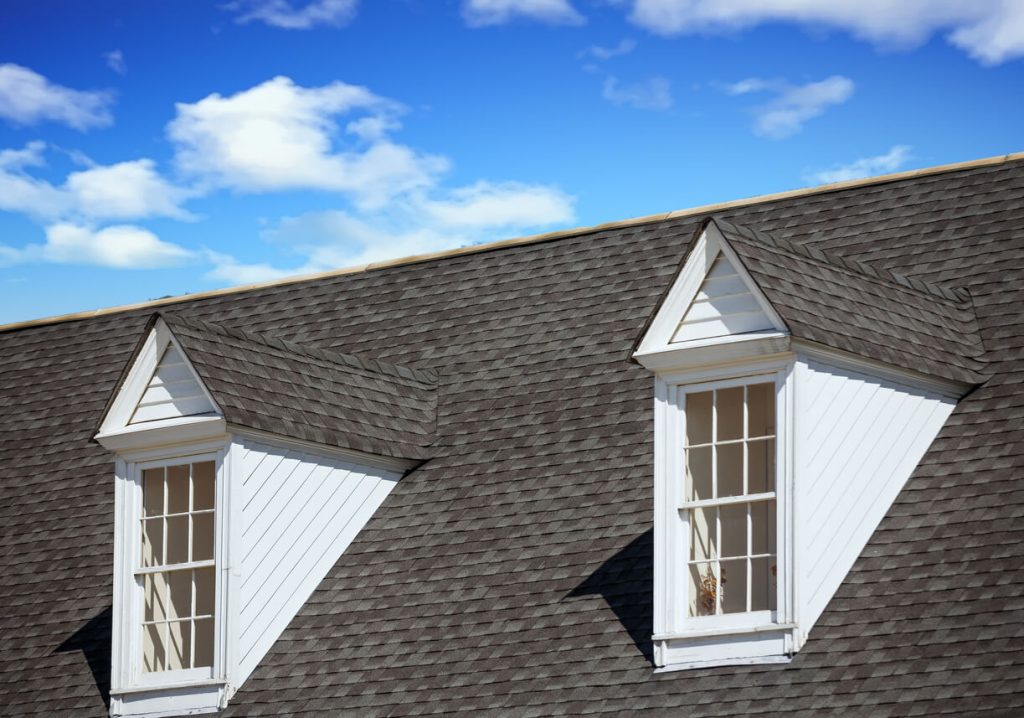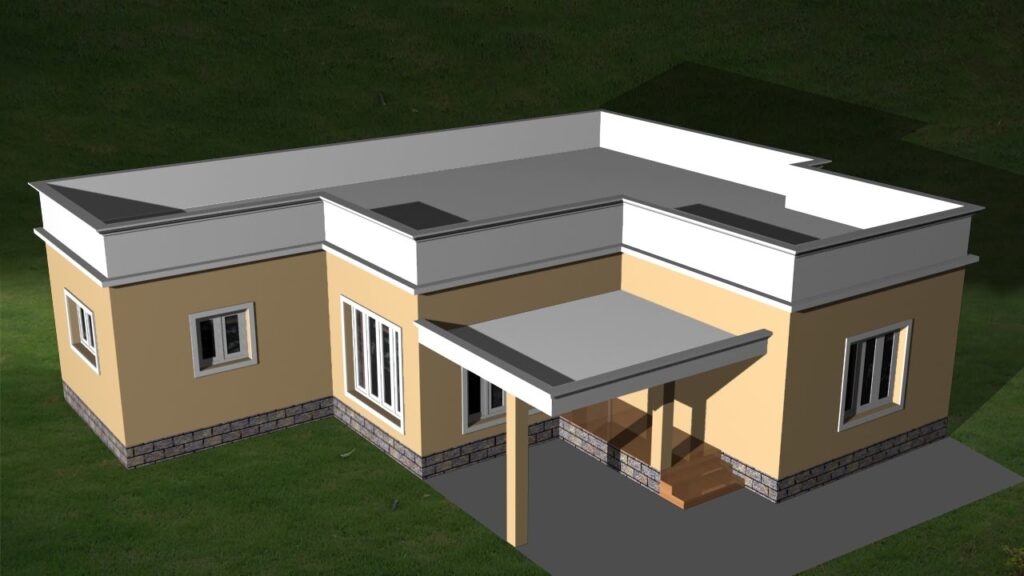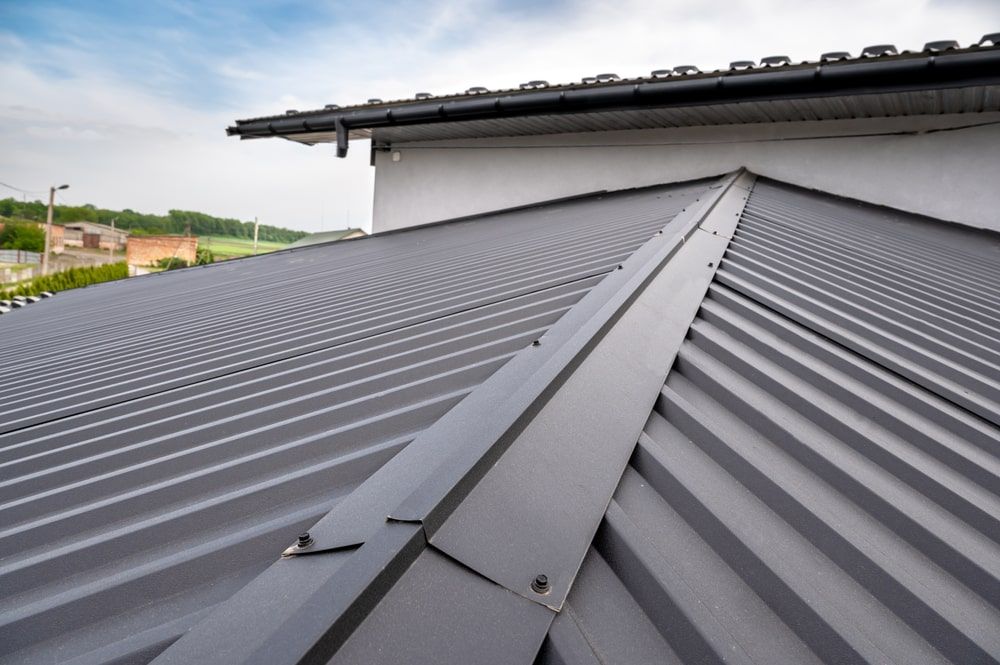Are you in the market for a new roof but worried about the costs? Look no further, because we have the answer for you! In this article, we will explore the different types of roofing styles and reveal the cheapest option available. Whether you’re a homeowner or a business owner, finding an affordable roofing style that doesn’t compromise on quality is essential. So let’s get started and discover the most budget-friendly roofing style that will keep your wallet happy and your property protected!

Types of Roofing Styles
When it comes to choosing a roofing style for your home, there are plenty of options to consider. Each roofing style has its own unique characteristics, advantages, and costs. In this article, we will explore the different types of roofing styles available and provide you with the information you need to make an informed decision.
Asphalt Shingles
Asphalt shingles are one of the most popular and affordable roofing options on the market. They are made from a combination of asphalt and fiberglass, which makes them durable and resistant to weather and fire. Asphalt shingles come in a wide range of colors and styles, allowing you to choose a look that matches your aesthetic preferences. Additionally, asphalt shingles are relatively easy to install, which helps keep installation costs low.
Metal Roofing
Metal roofing has gained popularity in recent years due to its durability and longevity. While the initial cost of metal roofing may be higher than other types of roofing materials, it can last for 50 years or more with proper maintenance. Metal roofing is also energy efficient and can help reduce heating and cooling costs. Additionally, metal roofing is available in a variety of styles and finishes, allowing you to achieve the desired look for your home.
Wood Shingles
Wood shingles are a classic and timeless roofing option. They are made from natural materials, typically cedar or redwood, which gives them a unique and rustic appearance. Wood shingles are durable and can last for 30 years or more when properly maintained. However, one factor to consider is the higher maintenance requirements of wood shingles compared to other roofing materials. They require regular inspections and treatments to prevent rot and mildew.
Tile Roofing
Tile roofing is a popular choice in areas with a Mediterranean or Spanish-style architecture. It is durable, fire-resistant, and can last for up to 100 years with proper care. Tile roofing is available in a variety of materials, including clay and concrete, and comes in a wide range of colors and styles. While tile roofing is known for its durability, it is also heavier than other roofing materials and may require additional structural support.
Slate Roofing
Slate roofing is a premium roofing option that offers timeless beauty and exceptional durability. It is made from natural slate stone, which gives it a unique and elegant appearance. Slate roofing can last for over a century, making it one of the longest-lasting roofing materials available. However, slate roofing is also one of the most expensive options and requires skilled professionals for installation.
Rubber Roofing
Rubber roofing, also known as EPDM roofing, is a synthetic material that is gaining popularity due to its affordability and ease of installation. It is resistant to weather damage, fire, and UV rays, making it a durable and low-maintenance option. Rubber roofing is available in different styles and colors, allowing homeowners to achieve their desired look. However, it is important to note that rubber roofing may not be as aesthetically pleasing as other roofing materials.
Fiber Cement Roofing
Fiber cement roofing is a versatile and affordable option for homeowners. It is made from a mixture of cement, sand, and cellulose fibers, which makes it resistant to fire, insects, and rot. Fiber cement roofing can mimic the appearance of wood shingles, slate, or even tile, allowing homeowners to achieve the desired aesthetic without the high cost. It is also a low-maintenance option that can last for several decades.
Corrugated Roofing
Corrugated roofing is typically made from galvanized steel, aluminum, or polycarbonate materials, making it a lightweight and affordable option. It is commonly used for agricultural and industrial buildings but can also be installed on residential properties. Corrugated roofing is durable, weather-resistant, and low-maintenance. However, it may not be as visually appealing as other roofing materials.
Built-Up Roofing
Built-up roofing, commonly known as BUR, is a traditional and economical option for flat or low-slope roofs. It is made by layering multiple plies of roofing felt and asphalt, creating a durable and weather-resistant barrier. Built-up roofing is known for its longevity, with proper maintenance it can last for 20 to 30 years. However, installation can be labor-intensive, resulting in higher installation costs compared to other roofing materials.
Green Roofing
Green roofing, also known as a living roof or vegetative roof, is an environmentally-friendly option that provides numerous benefits. It involves installing a layer of soil and vegetation on top of a waterproof membrane, creating a natural insulation and stormwater management system. Green roofing can reduce energy consumption, improve air quality, and extend the lifespan of the roof. However, it is important to consider the higher upfront costs and ongoing maintenance requirements when choosing this option.

Factors Affecting Roofing Costs
When determining the cost of your roofing project, several factors come into play. Understanding these factors can help you better plan and budget for your roofing needs.
Material Costs
The type of roofing material you choose will greatly impact the overall cost of your roofing project. Some materials, such as metal or slate, can be more expensive upfront, while others, like asphalt shingles, tend to be more affordable.
Installation Costs
The complexity of the installation process can affect the overall cost of your roofing project. Some roofing styles, such as metal or tile, may require more labor and expertise to install, resulting in higher installation costs compared to simpler roofing styles, like asphalt shingles.
Roof Size
The size of your roof is a significant factor in determining the cost of your roofing project. A larger roof will generally require more materials and labor, resulting in higher costs. Conversely, a smaller roof will typically have lower costs.
Roof Pitch
The pitch or slope of your roof can impact the overall cost of your roofing project. Steeper roofs are generally more challenging and time-consuming to work on, which can increase labor costs.
Complexity of Design
If you have a complex roof design, such as multiple valleys, dormers, or skylights, the overall cost of your project may be higher. The more intricate the design, the more labor and materials will be required to achieve the desired result.
Geographical Location
Your geographical location can also affect the cost of your roofing project. Factors such as local building codes, access to materials, and the availability of roofing professionals can vary from one region to another, resulting in different costs.
Labor Costs
The cost of labor can vary depending on factors such as the region, the complexity of the project, and the expertise of the roofing professionals. Labor costs are a significant component of the overall roofing costs and should be considered when budgeting for your project.
Maintenance Costs
While the initial cost of your roofing style is important, it’s also essential to consider the long-term costs, including maintenance. Some roofing styles require more maintenance than others, which can increase the overall cost of owning and maintaining your roof over its lifespan.
Warranty
Different roofing styles may come with different warranty options. It is important to consider the warranty terms and coverage when comparing costs. A longer and more comprehensive warranty may add value to your investment but can also come with a higher upfront cost.

Comparing Cost of Different Roofing Styles
Now that we have explored various factors that affect roofing costs, it’s time to compare the costs of different roofing styles. Here, we’ll take a closer look at how asphalt shingles compare to other popular roofing materials in terms of cost.
Asphalt Shingles vs. Metal Roofing
Asphalt shingles tend to be more affordable than metal roofing. While metal roofing provides durability and longevity, its higher upfront cost may make it less budget-friendly compared to asphalt shingles.
Asphalt Shingles vs. Wood Shingles
When comparing asphalt shingles to wood shingles, asphalt shingles are generally more cost-effective. Wood shingles may have a higher material and installation cost, as well as require more frequent maintenance.
Asphalt Shingles vs. Tile Roofing
Tile roofing is often more expensive than asphalt shingles, both in terms of material and installation costs. Additionally, the weight of tile roofing may require additional structural support, further increasing the overall cost.
Asphalt Shingles vs. Slate Roofing
Slate roofing is considered a premium option and can be significantly more expensive than asphalt shingles. While slate roofing offers exceptional durability and longevity, its high cost may not be suitable for every budget.
Asphalt Shingles vs. Rubber Roofing
Rubber roofing is often more affordable than asphalt shingles. Its lower cost, ease of installation, and low maintenance make it an attractive option for budget-conscious homeowners.
Asphalt Shingles vs. Fiber Cement Roofing
Fiber cement roofing can be a cost-effective alternative to asphalt shingles. While it mimics the appearance of more expensive materials, such as wood or slate, it comes at a lower cost.
Asphalt Shingles vs. Corrugated Roofing
Corrugated roofing is typically more affordable than asphalt shingles. It is a popular choice for agricultural or industrial buildings and can provide a cost-effective option for homeowners.
Asphalt Shingles vs. Built-Up Roofing
Built-up roofing can offer a budget-friendly solution for flat or low-slope roofs. Its durability and longevity can justify the higher installation costs compared to asphalt shingles.
Asphalt Shingles vs. Green Roofing
Green roofing can be more expensive upfront compared to asphalt shingles. However, the long-term benefits and potential energy savings may outweigh the higher initial costs for environmentally-conscious homeowners.
Metal Roofing vs. Wood Shingles
When comparing metal roofing to wood shingles, metal roofing tends to be more expensive. However, its durability, energy efficiency, and low maintenance requirements may offset the higher upfront costs over time.

Advantages and Disadvantages of Cheap Roofing Styles
While inexpensive roofing styles may offer cost savings upfront, it’s important to consider their advantages and disadvantages in the long run.
Asphalt Shingles
Advantages:
- Affordable upfront cost
- Wide variety of colors and styles
- Relatively easy installation
- Decent durability and lifespan
Disadvantages:
- Prone to weather damage over time
- Requires regular maintenance
- Less energy-efficient compared to other options
- May not add significant value to the property
Metal Roofing
Advantages:
- Exceptional durability and longevity
- Energy-efficient and environmentally friendly
- Low maintenance requirements
- Resistant to weather, fire, and pests
Disadvantages:
- Higher upfront cost
- Noise during heavy rain or hailstorms
- Requires professional installation
Wood Shingles
Advantages:
- Natural and rustic appearance
- Good insulation properties
- Decent durability with proper maintenance
- Can add value to the property
Disadvantages:
- Higher upfront cost compared to asphalt shingles
- Requires regular maintenance to prevent rot and mildew
- Limited lifespan compared to other materials
- Fire-prone and may not be suitable in some areas
Tile Roofing
Advantages:
- Long-lasting and durable
- Wide range of colors and styles
- Fire-resistant and low-maintenance
- Adds architectural character to the property
Disadvantages:
- Higher upfront and installation costs
- Heavyweight may require additional structural support
- Limited availability in some regions
Slate Roofing
Advantages:
- Exceptional durability and longevity
- Elegant and timeless appearance
- Fire-resistant and low-maintenance
- Adds significant value to the property
Disadvantages:
- Premium pricing, one of the most expensive options
- Requires skilled professionals for installation
- Heavyweight requires additional structural support
- Limited availability and style options
Rubber Roofing
Advantages:
- Affordable and cost-effective
- Resistant to weather, fire, and UV rays
- Easy installation and low maintenance
- Environmentally friendly and recyclable
Disadvantages:
- Less visually appealing compared to other materials
- Limited color options
- May not be suitable for all architectural styles
- Lifespan may not be as long as other roofing options
Fiber Cement Roofing
Advantages:
- Versatile and affordable option
- Can mimic the appearance of more expensive materials
- Resistant to fire, insects, and rot
- Low-maintenance and durable
Disadvantages:
- Potential for cracking or chipping over time
- May require occasional repainting
- Limited style options compared to other materials
- Requires professional installation for best results
Corrugated Roofing
Advantages:
- Lightweight and affordable option
- Durable and weather-resistant
- Low maintenance requirements
- Suitable for agricultural or industrial buildings
Disadvantages:
- Not as visually appealing as other materials
- Limited application for residential properties
- Potential for noise during heavy rain or hailstorms
Built-Up Roofing
Advantages:
- Economical solution for flat or low-slope roofs
- Excellent durability and weather resistance
- Long lifespan with proper maintenance
- Can withstand foot traffic and extreme weather conditions
Disadvantages:
- Requires skilled professionals for installation
- Labor-intensive process may result in higher installation costs
- Potential for unpleasant odors during the installation process
- May not be suitable for all architectural styles
Green Roofing
Advantages:
- Excellent insulation properties, reduces energy consumption
- Manages stormwater runoff and improves air quality
- Extends the lifespan of the roof
- Adds aesthetic and environmental value to the property
Disadvantages:
- Higher initial cost compared to traditional roofing materials
- Requires professional installation and expertise
- Ongoing maintenance and irrigation requirements
- Limited availability of materials and expertise in some areas

Choosing the Right Roofing Style for Your Budget
Now that you have an understanding of the different roofing styles and factors that affect costs, it’s time to choose the right roofing style for your budget. Here are some steps to guide you through the decision-making process:
Evaluate Your Budget
Begin by evaluating your budget. Determine how much you are willing to spend on your roofing project, taking into account both the upfront cost and potential long-term maintenance costs. Remember that while it may be tempting to choose the cheapest option, investing in a higher quality roofing style may save you money in the long run.
Consider Performance Expectations
Consider your performance expectations for your roof. Do you want a roofing style that offers exceptional durability and longevity? Are energy efficiency and environmental sustainability important to you? Understanding your priorities will help narrow down your options.
Research Available Materials
Research the available roofing materials and their respective costs. Look for materials that align with your budget and performance expectations. Take into consideration factors such as durability, maintenance requirements, and aesthetics.
Consult with Roofing Professionals
Consulting with roofing professionals can provide valuable insights and recommendations. They can assess your specific needs and provide expert advice on the most suitable roofing style for your budget. Additionally, they can provide estimates and help you understand the expected costs involved.
Obtain Multiple Quotes
Obtain multiple quotes from roofing contractors. By obtaining multiple quotes, you can compare the costs and services provided by different professionals. This will help ensure that you are getting a fair price for your roofing project.
In conclusion, choosing the right roofing style for your home requires careful consideration of various factors. By understanding the different types of roofing styles, the factors that affect costs, and evaluating your budget and performance expectations, you can make an informed decision that suits your needs and budget. Remember to consult with roofing professionals and obtain multiple quotes to ensure you are getting the best value for your investment.